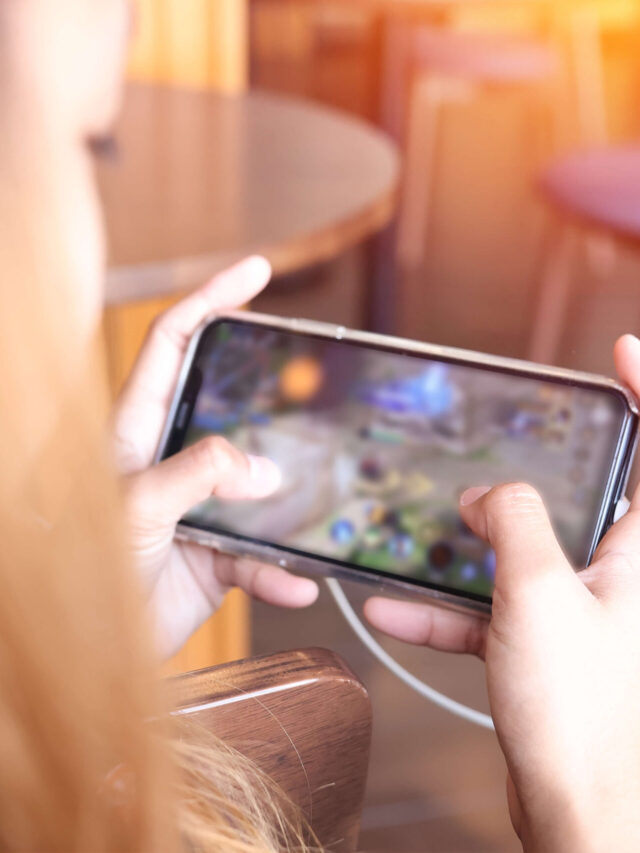Have Danish children and young people turned into digital junkies?
Is it reasonable to equate extensive smartphone use with addiction?
When I make presentations in front of parents around the country, many of them are usually very concerned, and they want me to tell them if their children risk developing an addiction because they spend a lot of time in front of a screen, and if so, what steps can be taken to reverse such an addiction. I understand why they ask these questions. For as soon as you enter an elementary school during a break, you will find the majority of the senior pupils with their face buried in a screen. Many of them don’t talk with each other, and if they have put the phone away during lessons, at most, it is put into one’s pocket, ensuring that the person in question will always be able to feel if he/she receives a message or a notification. Because if someone is texting you about something important, you have to be ready to respond immediately. And if the children are going on vacation somewhere where WIFI is not guaranteed, their login credentials for SnapChat will be passed on to a friend, in order to make sure that streaks are not lost. Many young people don’t physically hang out together after school. Instead, many children and young people spend between 3-4 hours in front of a screen on a daily basis. Many of the parents, which I meet all over the country, feel that this is a large amount of time. In light of this, it is quite understandable that a great many parents and professionals are very concerned about the behaviour of out children and young people. And there are indications, that the young people too are increasingly aware that their screen-use has gotten out of hand. Case in point: according to a study (in Danish) from 2017, 67% of highschool girls feel like they use their smartphone too much.
But! There is a very big difference between using one’s smartphone too much, and suffering from an actual addiction. Being addicted is a diagnosis, and according to the WHO’s definition, something should be characterized as an addiction, only if it makes the person in question neglects other activities, such as school, work, leisure activities, or social relations, in favour of the the thing, which the person is addicted to. Only very few use their smartphones, tablets, etc. to such an extend. Computer games’ research suggests that only about 3% of gamers develop something akin to an addiction. As for the question of whether or not it is reasonable to compare using this technology to using narcotics, such as cocaine or methamphetamine – specifically whether or not the two kinds of activity both activate the same pleasure processes in the brain, such as the release of dopamine – the results are rather interesting. The research shows that, compared to other normal and fun activities, playing computer games increases the release of dopamine by an additional 50%-100%. Furthermore, other research results show that dopamine is increased by an additional 1200%, when using methamphetamine. In the words of the lecturer Andreas Lieberoth (article in Danish) “It’s like comparing a forest lake to the North Sea”. With all of this taken into account, it could be argued that it is a bit misleading to use terms like “addict” and “digital junkie”, about someone who is spending a lot of time in front of a screen.
We should not accept that children and young people are absent-minded
Even though it is only a very limited number of children and young people 
Smartphone use is a symptom of something else
But how do we help children and young people find this ballance? I do not claim to know of a perfect solution to the challenge regarding children and young people’s – sometimes excessive – use of digital media. I know that finding a universal one-size-fits-all -solution can be difficult, simply because children and young people are all different. But if you are worried that your child might be spending too much time with his/her screens, try looking at the motivation behind this usage pattern. Is your child checking Instagram frequently because he/she is waiting for an uploaded picture to get enough likes, wanting to make sure that he/she will not have to remove it, because a picture without enough likes would be embarrassing? Or is it because he/she feels a need to be up to date regarding what’s happening, because not being so would mean risking missing out on something? Or maybe your child absolutely has to game every day. Could that have something to do with the friends whom he/she is meeting online? Is your child frequently occupied sending snaps because he/she is afraid of losing streaks, which would mean risking that a friend gets angry? Or could it be because SnapChat is an easy way to be involved in each others lives? We have to be curious, and ask questions regarding why children and young people are so occupied by that which is happening on their smartphones. Because it is not the smartphone as such, which causes excessive use. Rather it is all the things which the smartphone lets the user access – e.g. communities and affirmations. And if at the outset, the children feel that they are being met at eye level, and feel like they are being understood, then having constructive conversations about smartphone use becomes a lot easier.
Because we should talk with our children about their screen use. And it really is okay to have rules or guidelines concerning screen use. But most likely, many people have experienced, how getting the children to abide by such rules can be a daily struggle. However, getting there can sometimes be easier, if the children have been involved in the making of said rules, including being involved in defining the consequences of not abiding by the rules. And needless to say these rules then apply to all members of the family. The reasons for this being, that as adults, we have to recognize and accept, that we are role models for our children. They follow our example, which is why it is important that we take a look at our own screen usage, before pointing fingers at the children.
Finally, as is the case when it comes to a lot of things, it may be easier for many children and young people to blame their parents for not allowing them to be available online, rather than admitting to friends that actually, they don’t feel like being available on the smartphone all the time.
This blog post was originally written by Pernille Ballisager (pernille@cfdp.dk), speaker and project manager, Centre for Digital Youth Care
Translation was done by Michael K. Sørensen, project worker, Centre for Digital Youth Care ]]>




Hvis du vil sætte et par ord på din feedback, vil det hjælpe os rigtig meget til at forbedre vores indhold.